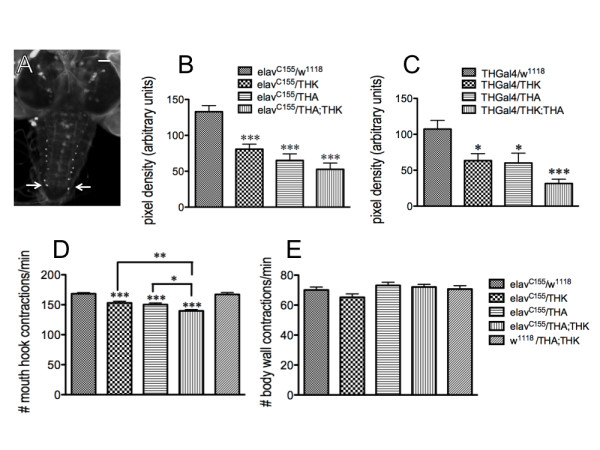Figure 2.

Constitutive reduction in neuronal DTH results in depressed feeding behavior. Two independent RNAi transgenic lines (DTHA, inserted on chromosome 2, and DTHK, on chromosome 3) were used to titrate constitutive knockdown of DTH levels throughout CNS development. The pixel intensity of the DTH-immunofluorescence of the most distal dorsolateral neurons in the ventral ganglion was determined to ascertain the extent of DTH knockdown (A). Scale bar = 50 μm. Larval brains were dissected from each genotype using the pan-neuronal elavC155 (B) or THGal4 drivers (C). Brains from all animals were assessed in parallel. The DA cell pattern in each brain was visualized with a polyclonal antibody raised against DTH (Neckameyer et al, 2000) and viewed under fluorescence. elav/w1118, n = 30 neurons [control]; elav/THK, n = 18 neurons; elav/THA, n = 15 neurons; elav/THA;THK, n = 13 neurons; THGal4/w1118, n = 30 neurons [control]; THGal4/THK, n = 22 neurons; THGal4/THA, n = 18 neurons; THGal4/THA;THK, n = 26 neurons. *p < 0.05, ***p < 0.001, one way ANOVA followed by Tukey's post-test. The animals were then assayed for feeding (D) and locomotor behavior (E) (including an additional control, w1118/THA;THK). E. Locomotion was unaffected. *p < 0.05, **p < 0.01, ***p < 0.001, one way ANOVA followed by Tukey's multiple comparisons post-test. n = 40 for behavioral analyses, from 4-6 independent experiments. Lines above the graph depict standard error of the mean.
